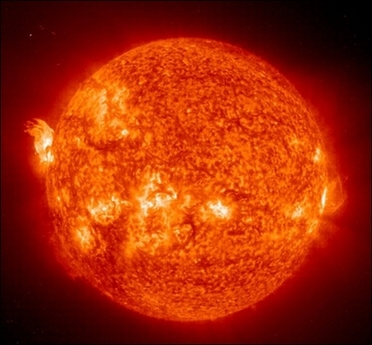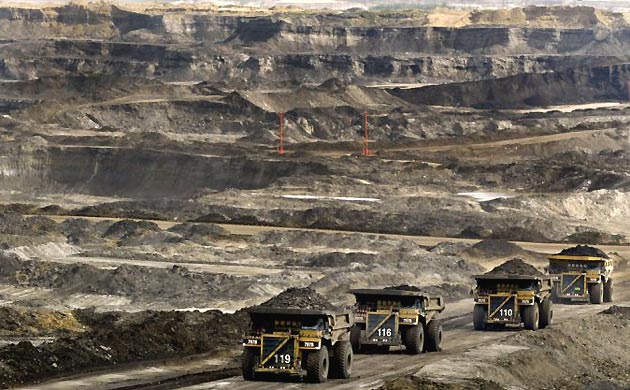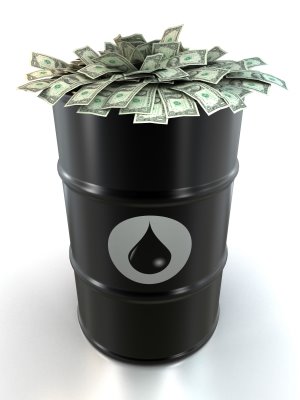Energy & Commodities
Malaysia’s state-owned oil and gas company just made a multi-billion-dollar bet that Canada will choose to export its shale gas riches. Even though the odds of securing permission to export liquefied natural gas (LNG) from the Canadian west coast are still pretty poor, the costs of such an endeavor immense, and the timeline in question very long, Petronas is putting $5.5 billion on the table – far more than it has ever spent on an acquisition before – to secure a large foothold in the British Columbia shale gas scene.
It’s yet another sign that things are getting serious in the global race for resources.
The race for resources drives much of our thinking within the Casey Research energy group. It’s more than a common theme – we believe that it is one of the strongest forces at work in our world today, and that it plays a role in determining the tone of many international relationships and domestic policies. Countries that have resources, from Russia to Australia, are altering fiscal structures and ownership rules so as to glean as much benefit as possible from their riches, while still reserving sufficient supplies to fuel their futures. Countries that lack natural-resource wealth, such as Japan and South Korea, are racing to lock up projects and partnerships abroad that can supply their future resource needs.
And a race it is, because they are not alone. There are few countries in this world with natural supplies of all the energy commodities they need – Australia, Russia, and Canada are among the few that do – and everyone else has to constantly wheel and deal to secure imports. Now the easy deposits of many energy resources are disappearing, but global demand continues to rise. The result: stiffer competition.
Petronas’ deal is a perfect example. Petronas is buying Calgary-based Progress Energy Resources (T.PRQ) for C$4.8 billion in cash. Including convertible debt the deal is valued at about C$5.5 billion. In announcing the deal, Petronas also said it has chosen Prince Rupert, BC, as the home of its planned LNG export terminal.
So the company is spending billions of dollars to acquire 1.9 trillion cubic feet of proven and probable gas reserves… but there is no guarantee that they will be able to export any of that gas in the foreseeable future.
Pipelines have become a highly contentious issue in North America – just as US citizens are embroiled in a debate over the Keystone XL pipeline which would transport oil sands crude south, Canadians are arguing the merits and liabilities of the Northern Gateway pipeline, which would move oil sands crude to the west coast for transport to Asia. One of the big arguments against Northern Gateway is the danger of sending tanker traffic through the coastal waters of northern BC, where an oil spill would be near impossible to clean and would irreparably damage a pristine ecosystem.
The same arguments will surface with natural gas. The LNG terminal that Petronas envisions in Prince Rupert would send loaded tankers through those same sensitive waters, an idea that is far from accepted in the region at this point. The pipelines ferrying natural gas to that terminal would cross mountainous terrain burdened with heavy winter snowpack and dramatic summer melts that regularly cause hillsides to slide and rivers to swell their banks and take out bridges – all points that opponents will use to argue that the potential risks outweigh the benefits.
In short: Petronas and its peers face a steep, uphill battle in their quest to permit pipelines and LNG terminals on the west coast. But as we wrote last week, the potential for big profits will also play a role.
Remember, natural gas in its gaseous state is a landlocked commodity. Its low energy-to-volume ratio renders it uneconomic to ship, which means pipelines are the only option. To move natural gas over oceans it has to be condensed into LNG, increasing the energy-to-volume ratio dramatically and making it economic to load onto tankers and send around the world.
Many major global economies rely on LNG to meet their natural gas needs; and demand is on the rise. In 2011, global LNG trade grew by 9.4% compared to 2010, with Asia generating most of the demand increase. Japan is the world’s top LNG importer, having bought 79.1 million tonnes in 2011; South Korea is in second place with imports near 36 million tonnes. India, China, and Taiwan are all also major LNG buyers, helping to lift Asia into top spot as a regional LNG import market: Asian LNG buyers accounted for 63.6% of the global market in 2011.
That level of demand from a part of the world fairly short on supply means high prices. LNG in Asia is currently worth between $17 and $18 per million British Thermal Units (MMBtu) – six to seven times the price of natural gas in North America.
That price difference is precisely why Petronas is maneuvering to buy reserves in North America. The gamble is simply worth its while – if Petronas is able to build pipelines and an LNG terminal on the west coast, the company will be able to take a commodity worth a few dollars here and sell it for many times more in Asia.
The lure of that payout has drawn many players to this expensive, drawn out, and highly uncertain game. With this deal, Petronas joins a growing list of international energy companies including PetroChina, Mitsubishi, and CNOOC that are spending billions on remote natural gas plays in Alberta and BC, all of which share the same dream of selling the gas in Asian markets.
While these Asian energy giants take on the risk, Canadian gas explorers pretty much get to just enjoy the benefits. Depressed North American gas prices have brought most gas explorers to a standstill – investors and banks alike are not interested in funding projects where the cost of production is almost the same as the value of the product. But being bought out or finding a partner with deep pockets is a perfect solution. As Progress’ CEO said, “Our asset base requires extensive capital to develop its large potential and ultimately access international LNG markets. Petronas offers the size and scale that will enable our company to continue to grow and not be limited by the same cash flow challenges faced by many producers in the North American natural gas market today.”
Since Canada’s gas explorers are stuck in neutral, you might think that Asian energy firms would be making minimal offers, trying to acquire these resources on the cheap. Instead, Petronas offered C$22.45 a share for Progress, 77% more than Progress’ closing price the previous day. Are they trying to earn goodwill with Canadians? Perhaps, but there’s a more likely explanation for their generosity: pressure from behind. If they made a stink bid and Progress voiced displeasure, the dispute could draw attention from Petronas’ peers, which are also on the lookout for good natural gas deals. One of these peers might then swoop in and make a better offer, leaving Petronas empty-handed.
This is the impact of the race for resources. These Asian energy giants are racing with each other to secure resources for the future. The constant pressure to stay ahead in the race means companies will offer whatever it takes to secure a deal quickly, before anyone else trips up their efforts.
Shale gas riches have positioned North Americans as beneficiaries in the global race to secure natural gas supplies. However, complacency is a dangerous thing. Just because North America has gas doesn’t mean it has all of the energy resources it needs for the future. President Obama’s recent executive order on Russian uranium was a reminder that the US relies on imports to feed its nuclear reactors, and with the Megatons deal coming to an end, the United States is being thrust into the global race for uranium just as that race is heating up.
Scarcity is a powerful force and it leaves those in control of limited resources wielding great power. We think a scarcity of uranium will increase Russia’s power; control over some of the last big, easy oil deposits has earned Saudi Arabia great global influence. Petronas’ deal with Progress is a sign that shale gas could generate similar prowess for North America, and is a strong reminder that the global race for resources will provide some with money and power while leaving others in the dust.
North American energy resources don’t guarantee the US a comfortable position in the gas and oil sectors. Pipeline politics and eager Asian bidders may leave the United States literally out in the cold.

Disclaimer: Nothing in this commentary should be construed as investment advice or guidance or any recommendation to buy or sell any financial instrument. It is not intended as investment advice or guidance, nor is it offered as such. It is solely the opinion of the writer, who is NOT an investment counselor/professional. All content of this commentary is solely an expression of his personal interests and is posted as free-of-charge commentary and is subject to error and change without notice. Please do your own due diligence before investing in ANYTHING. The presence of a link to a website does not indicate approval or endorsement of that website or any services, products or opinions that may be offered by them.

Quote
“But now something beyond the incompetence of the financial elite and the big banks may be putting capitalism in peril — an unmistakable odor of amorality, sleaziness and corruption.” Pat Buchanan
Of Interest
Europe Accelerates Aid to Spanish Banks (Bloomberg)
China’s Deflationary Threat (Businessweek)
Commentary
Long positions on commodity futures increased the most in two years. As it relates to the managed money category of the Commitment of Traders report, hedge funds decide to pile in during the week ending July 3. Do hedge funds know something we don’t? Or are they just positioning ahead of a third and fourth quarter they expect will be a repeat of 2011 and 2010?
China just announced an unexpected increase in their trade surplus, a result of an unexpected decline in imports. Notable were the declines in commodity imports – especially copper, iron ore, and crude oil. Some might say this decline was seasonal sluggishness. Some might say it was only a matter of time. We think the risk is to the downside unless the Chinese government’s promised infrastructure stimulus projects create notable demand for commodities and raw materials before the year is over. Don’t bet on it – sustained demand from these projects, considering their relatively modest profile, would be quite the feat. Chinese GDP is to be reported on Friday. Expectations are for a print below 8%. Investors have been quick to predict China’s managed slowdown will bottom out in the next few months. That makes sense, considering China’s resiliency over the last two years. But when second quarter results are released Friday, we’re likely to see a sixth consecutive slowdown in China’s growth rate. Chinese officials appear somewhat desperate, considering their surprise rate cuts recently. I’m not too confident Chinese policymakers can have the influence they once had on the economy; there are too many external forces to keep the pressure on China’s economy.
Action
We’ve talked about our expectations for copper to continue its downturn; same goes for crude oil, as we just released a recommendation on DTO last week. But iron ore may be an area of interest – the Market Vectors Steel ETF (SLX) holds shares of key iron ore and steel industry players (though the volume is rather low). Time to sell short SLX as Chinese iron ore imports begin to dissipate?



Today, let’s have some fun and play Fairy Godmother to Quebec . Let’s grant the province the wish it articulated in Copenhagen . Wave the magic wand and poof, wish granted. Shut down Alberta ‘s oilsands, except, since it’s Quebec making the wish, we have to call it tarsands, even though it’s not tar they use to run their Bombardier planes, trains and Skidoos.
Ah, at last! The blight on Canada ‘s reputation shut down. All those dastardly workers from across Canada living in Fort McMurray, Calgary and Edmonton out of jobs, including those waitresses, truck drivers, nurses, teachers, doctors, pilots, engineers etc. They can all go on Employment insurance like Ontario autoworkers and Quebec parts makers!
Closing down Alberta ‘s oil industry would immediately stop the production of 1.8 million barrels of oil a day. Supply and demand being what it is, oil prices will go up and therefore the cost at the pump will go up, too, increasing the cost of everything else.
But lost jobs in Alberta and across the country along with higher gas prices are a small price to pay to save the world and not “embarrass” Quebecers on the world stage. Not to worry though, Saudi Arabia, Libya and Nigeria can come to the rescue. You know, the guys who pump money into al-Qaida and help Osama bin Laden target those Van Doos fighting in Afghanistan . Bloody oil is so much nicer than dirty tarsands oil.
Shutting down the oilsands will reduce Canada ‘s greenhouse gas (GHG) emissions by 38.4 Mt (megatonnes). Hooray! It’s so fun to be a Fairy Godmother! While that sounds like a lot, Canada only produces two per cent of the world’s man-made GHGs and the oilsands only produce five per cent of Canada ‘s total emissions or 0.1 per cent of the world’s emissions. By comparison, the U.S. produces 20.2 per cent of the world’s GHG emissions, 27 per cent of which comes from coal-fired electricity.
The 530-square-kilometre piece of land currently disturbed by the oilsands (which is smaller than the John F. Kennedy Space Center at Cape Canaveral , Fla. at 570 square kilometres) must be reclaimed by law and will return to Alberta ‘s 381,000 square kilometres of boreal forest, a huge carbon sink.
Quebec , of course, has clean hydro power, but more than 13,000 square kilometres were drowned for the James Bay hydroelectric project, permanently removing that forest from acting as a carbon sink.
But Fairy Godmother is digressing all over the place. While the oilsands only produce five per cent of Canada ‘s GHGs, it contributes much more to Canada ‘s economy. After all, oil and gas make up one-quarter of the value on the TSX alone. Alberta is also the largest net contributor per capita by far to Confederation and there are only two more — B.C. and Ontario .
Quebec hasn’t made a net contribution to the rest of Canada for a very long time. This is not to be critical (after all, Fairy Godmothers never criticize), it’s just a fact. In 2009, Albertans paid $40.46 billion in income, corporate and other taxes to the federal government and received back just $19.35 billion in services and goods from the feds. That means the rest of Canada got $21.1 billion from Albertans or $5,742 for each and every Alberta man, woman and child. In 2007 (the last year national figures are available), Alberta sent a net contribution of $19.49 billion to the ROC or $5,553 per Albertan — more than three times what every Ontarian contributes at $1,757. Quebecers, on the other hand, each received $627 net or a total of $8 billion, money which was designed to help “equalize” social programs across the country.
Except, that’s not what is happening. Quebec has more generous social programs like (nearly) free university tuition (paid for mostly by Albertans) and cheap provincial day care (paid for mostly by Albertans).
But in this Fairy Godmother world, poof, those delightful unequal programs have now disappeared! Quel dommage!
The July 2009 Canadian Energy Research Institute (CERI) report states that between 2008 and 2032, the oilsands will account for 172,000 person-years of employment in Ontario during the construction phase, plus 640,000 for operations over the 25-year period. For Quebec, the oilsands will account for 84,000 person-years of employment during the construction phase, plus 292,000 for operations over the 25-year period.
In total, the oilsands are expected to add $1.7 trillion to Canada ‘s GDP over the next 25 years.
Wave wand and Poof, Jobs, gone! So, now that the oil industry has shut down and left Alberta , Alberta has become a have-not province and so has every other province. Equality at last! Hugo Chavez will be so pleased.
Meeting our Copenhagen targets suddenly looks possible, as most of us can’t afford to drive our cars or buy anything but necessities, so manufacturers have closed their doors and emissions are way down.
The dream of many Quebecers to form their own nation and separate from Canada has died at last. Alas, in Alberta , separatist sentiment has risen dramatically, citizens vote to separate and the oil and gas industry returns.
Albertans start to pocket that almost $6,000 for each person that used to get sent elsewhere and now their kids get free tuition. Fairy Godmother’s work is done. Wish granted. Quebecers must now sign up for a foreign worker visas to work in Alberta to send their cheques back home so junior can start saving up to pay for college.
Licia Corbella is editorial page editor of The Calgary Herald.
Please keeps this message going, forward to as many as possible.


Blackstone’s Byron Wien is up with a new blog post, wherein he relays a conversation he had with someone he only refers to as The Smartest Man In Europe. Business Insider Say’s what he has to say is Terrifying.
Wien doesn’t say who The Smartest Man In Europe is, but describes him as basically an incredibly brilliant, wordly, rich businessman.
So what does TSMIE see now?
Basically that massive amounts of debt will bring the decline of Western Civilization, but that in the meantime, before that happens, policy makers would pull every trick they could in order to stave off a catastrophic event.
After getting to the point where fiscal stimulus no long works, the world’s central banks will go into overdrive (as is already happening)
Be sure to read ““So what am I doing with my money?”, his conclusion in the second last paragraph HERE


One of the most famous oil price forecasters BP Capital’s T. Boone Pickens talks about the prices for natural gas and oil. He speaks with Trish Regan on Bloomberg Television’s ‘Street Smart.’
For Mr Pickens sub-$100 oil prices for Brent Crude marked the bottom of the sell-off and the only way is up, though he sees the US president manipulating the WTI price with the release of strategic reserves this autumn. Brent Crude is broadly the price the Middle East earns from exports.












